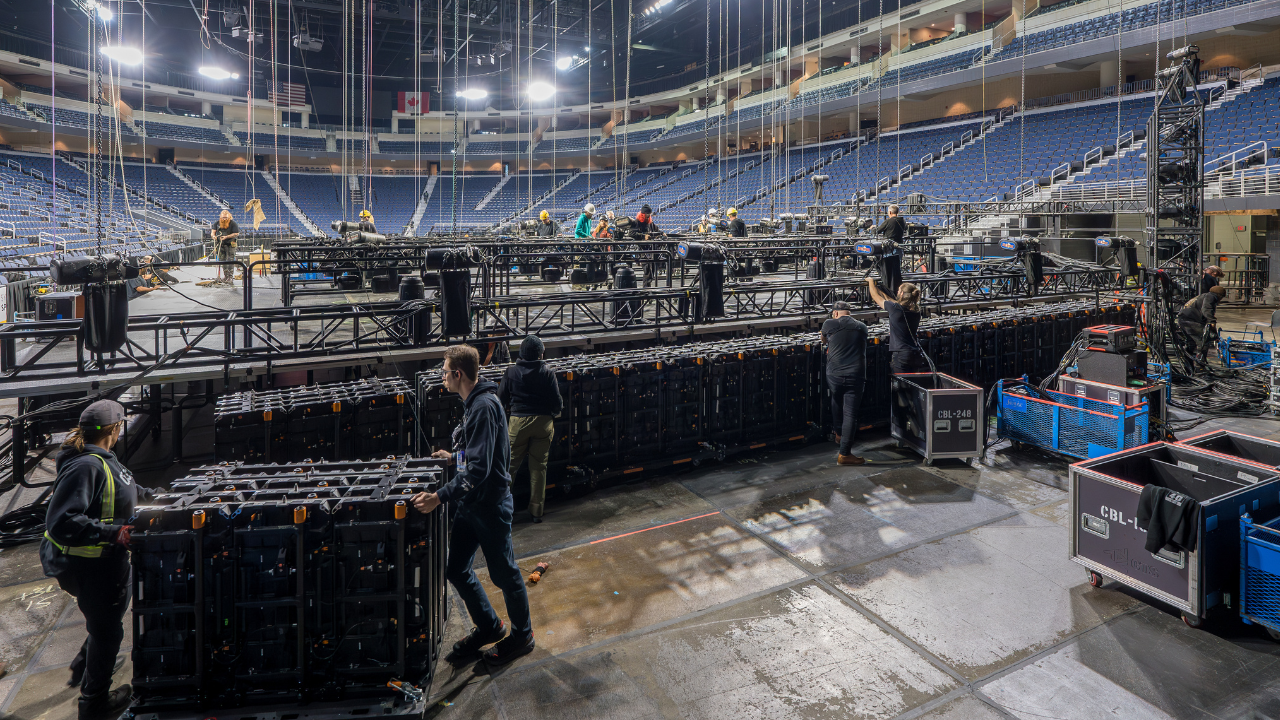The Church AVL Systems Upgrade Assessment
Published on: Tuesday, May 17, 2022 - 7:00am

Pastors often have new ideas for how they want to lead, or teach, or create experiences for the congregation. They make requests, and the technical staff or volunteers work to execute those ideas.
But sometimes, those requests stretch the boundaries of a church’s technical systems.
Is that stretch a challenge you can tackle, or does your church need newer or improved resources? How can you tell the difference?
This can be a difficult question for church decision makers to answer. Maybe a technical staff member has been suggesting a system upgrade, but you’re not sure the expense is justified. Or, maybe you’re a technical staff member unsure how best to communicate the need for an upgrade to leadership.
To help clarify the situation, CTS offers the Church AVL Systems Upgrade Assessment, a guideline to help decision makers and technical staff alike assess whether a project is necessary for your facility.
"*" indicates required fields
Help Decision Makers and Technical Staff Communicate
Decision Makers
Prioritizing projects can be difficult for decision makers. When budgets are involved, decisions receive scrutiny, and major expenses must be justified.
Some executive pastors and administrators appreciate and enjoy the process of updating technologies, while others see it as a costly undertaking. Some see the value in the results of the upgrade process for their ministry and congregation. Meanwhile, others ask, Isn’t there somewhere else this money could be more effective?
Even those who see the value in AVL systems upgrades may not know what’s needed and when. On top of that, decision makers aren’t often involved in or familiar with the nitty gritty of running technical systems. They have to rely on volunteers and technicians for both the operations and reports of technical strain. But how do they know when these reports amount to the need for an upgrade?
Technical Staff
Conveying technical challenges to decision makers is difficult for staff members. They don’t always know how to effectively communicate the issues in a way that leads to proper funding being allocated to these projects.
One issue could be that there’s no staff member directly overseeing the technical systems in the church. Or, perhaps there’s not enough time for staff or volunteers to evaluate whether their workflow is wrong or the technology is wrong.
Imagine this scenario: A volunteer wants to contribute to his church by helping mix sound at Sunday’s service. As is often the case, he has little expertise. He ends up battling issues on the fly; he doesn’t know whether the problems result from a failure in the PA, the microphone, the wireless, or the mix itself. He simply wants to create clean sound for the service.
People who don’t have first-hand experience with this AVL environment every day have a hard time determining if it’s a momentary problem, a long-term system problem, or simply their own lack of expertise.
Alternatively, technicians who do have expertise can have a hard time conveying needs to leadership as well. How can they make it clear that they’re recommending an upgrade because the ministry would benefit from it, not because they want a new toy?
The Church AVL Systems Upgrade Assessment provides an objective set of questions in four categories that helps convey the actual problem, how valid or how consistently troublesome it is, and whether it truly limits the work of your church.
"*" indicates required fields
Assess Your Issues Systematically
The Church AVL Systems Upgrade Assessment helps technical staff objectively evaluate and communicate systematic issues to leadership. It allows leadership to make an assessment of staff concerns and weigh the necessity for and impact of potential projects.
The assessment provides four major categories for consideration:
- Impact
- Deployment
- Operational Considerations
- Budget
Impact
The impact category asks how great the effect of a system upgrade will be on the church’s ongoing operations and ministry flexibility.
If your church uses the technology on a weekly basis for services in the main worship center, the project will be high impact. If you use it infrequently and for secondary functions, it’s lower impact.
A high-impact request might look like this: A technician requests a half-million dollars in systems upgrades.
Administrator: “We can afford that, but why are we doing it?”
Tech: “The audio system we use every week in our main worship center is dying. If we don’t fix it now, we’ll soon have a high risk of failures during services, and high stress to maintain and keep the system functioning.”
Deployment
Deployment asks what it would take to move forward on a project. It looks at the reality of the integration and setup.
What other dominoes will fall if you make this upgrade? Will you have to change 50 other things, or will you just insert the upgraded system or component into existing system infrastructure?
Will you have to shut down your main room for a month and interrupt normal operations? This may deter approval or push back the timeline for other projects or events.
Design changes, red tape, and internal processes are also factors in this category.
Operational Considerations
Operational considerations include staffing, operating ability, and future maintenance.
Will you have to add staff to manage your new system, maintain it, or operate it? Will you need more volunteers? Or will an upgrade require fewer volunteers or technicians, perhaps through introducing automation?
Budget
The budget category asks what an upgrade will cost and whether you have the money for it. It also evaluates whether your current systems are costing you time and money in maintenance and repairs and compares that ongoing operational expense to the expense of an upgrade.
How To Use the Assessment
"*" indicates required fields
Are volunteers or staff members coming to you with AVL projects they want to implement? Offer them the Church AVL Systems Upgrade Assessment to help them judge the value of an upgrade before presenting it to decision makers, and to help decision makers evaluate their requests.
If deployment will take a matter of two days and the necessary budget is low, then it’s easy to implement. Same if the impact is high and the budget is low. But if the impact is low and the burden of deployment is high, an upgrade might not be the right choice at that time.
AVL technology is moving as fast as computer and network technology. You wouldn’t stay on the same laptop for 10 years and expect it to still offer you modern efficiency and functionality. You can’t expect that of a sound system, lighting system, or video system either.
It may (or may not) be time for an upgrade. Use the Church AVL Systems Upgrade Assessment to find out.
"*" indicates required fields




